$0.00
No products in the cart.
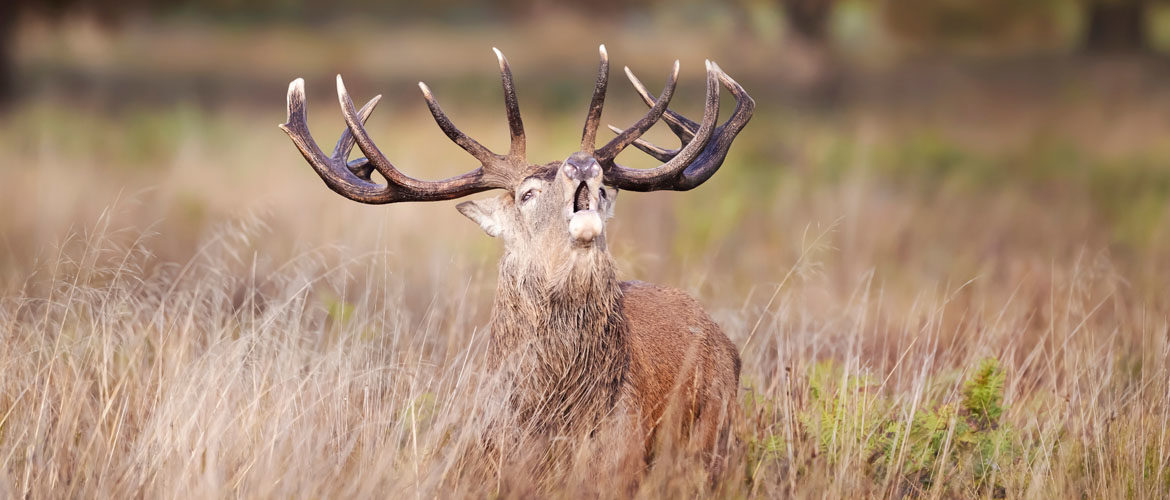
The Red deer, will often be associated as a representation of Europe and, in some cases a common emblem such as in Australia, the Stag adorning the label of a popular beer brand. The Red deer name is such because of the summer coat in which the deer often possesses, with dark rich russet-brown on their body and outer legs, tending toward grey downwards from the neck to the underbelly and inner legs. In Europe, the Red deer was a Royal privilege with laws surrounding their habitat and access. In New Zealand, the animal was the feature of the large scale 1930 culling operation as well as the famous 1970’s “Deer wars” and the consequential rise and fall over time of the concerted deer removal efforts. The Red deer have been the cause of the infamous Fiordland Wapiti dilution as well as noted hybridisation of the Sika in the North. The adaptive Red deer adorns a varied landscape across the world providing venison, velvet farm stock or pets as well as exciting hunting opportunities in various forms. The red deer is a unique species; No other form of deer sustains so much publicity.
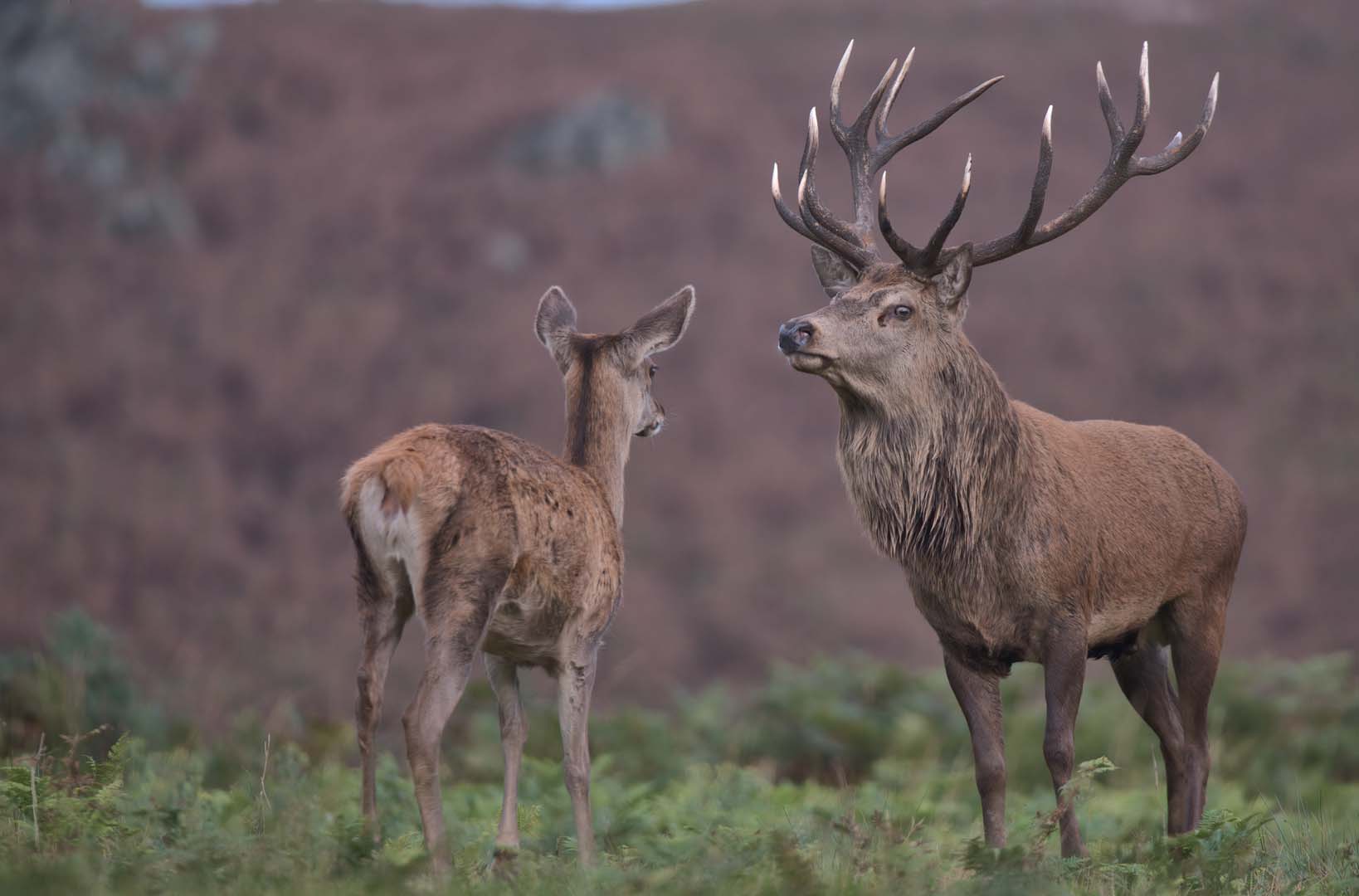
The Red deer’s’ binomial name, Cervus elaphus was defined by Linnaeus in 1758. The species in the form of Cervus elaphus appeared in the Europe by the beginning of the Middle Pleistocene around 700 to 800,000 years ago. These earliest forms belonged to the palaeo-subspecies Cervus elaphus acoronatus. Other palaeo-subspecies are known, such as those belonging to C. elaphus rianensis from the Middle Pleistocene of Italy and C. elaphus siciliae from the late Middle and Late Pleistocene of Sicily. Until recently, biologists considered the Red deer and Elk or wapiti (C. canadensis) the same species, forming a continuous distribution throughout temperate Eurasia and North America, however genetic evidence has shown that the Wapiti and Red deer form two separate species (Ludt, Christian J.; Wolf Schroeder; Oswald Rottmann; Ralph Kuehn (2004). “Mitochondrial DNA phylogeography of Red deer (Cervus elaphus)”).
Evidence indicates that the Red deer, as traditionally defined, is a species group, rather than a single species, though exactly how many species the group includes remains disputed(Moore, G.H.; Littlejohn, R.P. (1989). “Hybridisation of farmed wapiti” (Cervus elaphus manitobensis)).
Interestingly, Fossil records suggest that some of populations of Red deer occupying Brittan as part of Western Europe during the last glacial episode were similar in size to the modern day North American Wapiti (B. Banwell, The Red deer)
Although noted hybridisation occurs with Sika, it is believed the Red deer is still closely related to the Sika, having branched off a very early form of Wapiti. The Red deer family belongs to the species elaphus which was listed as having twenty three subspecies. Ten of which are “Wapiti” which are now classified into Cervus Canadensis, leaving thirteen in Cervus elaphus.
The ICUN lists three as endangered, one as vulnerable, one as near threatened, and four without enough data to give a category. This classification was based on the traditional classification of Red deer as one species (Cervus elaphus), including the Wapiti. The common group of Red deer is known simply as “Red deer” and the species as a whole is listed as least concern by the ICNU. A further four subspecies are thought to be included into this group and are noted below.
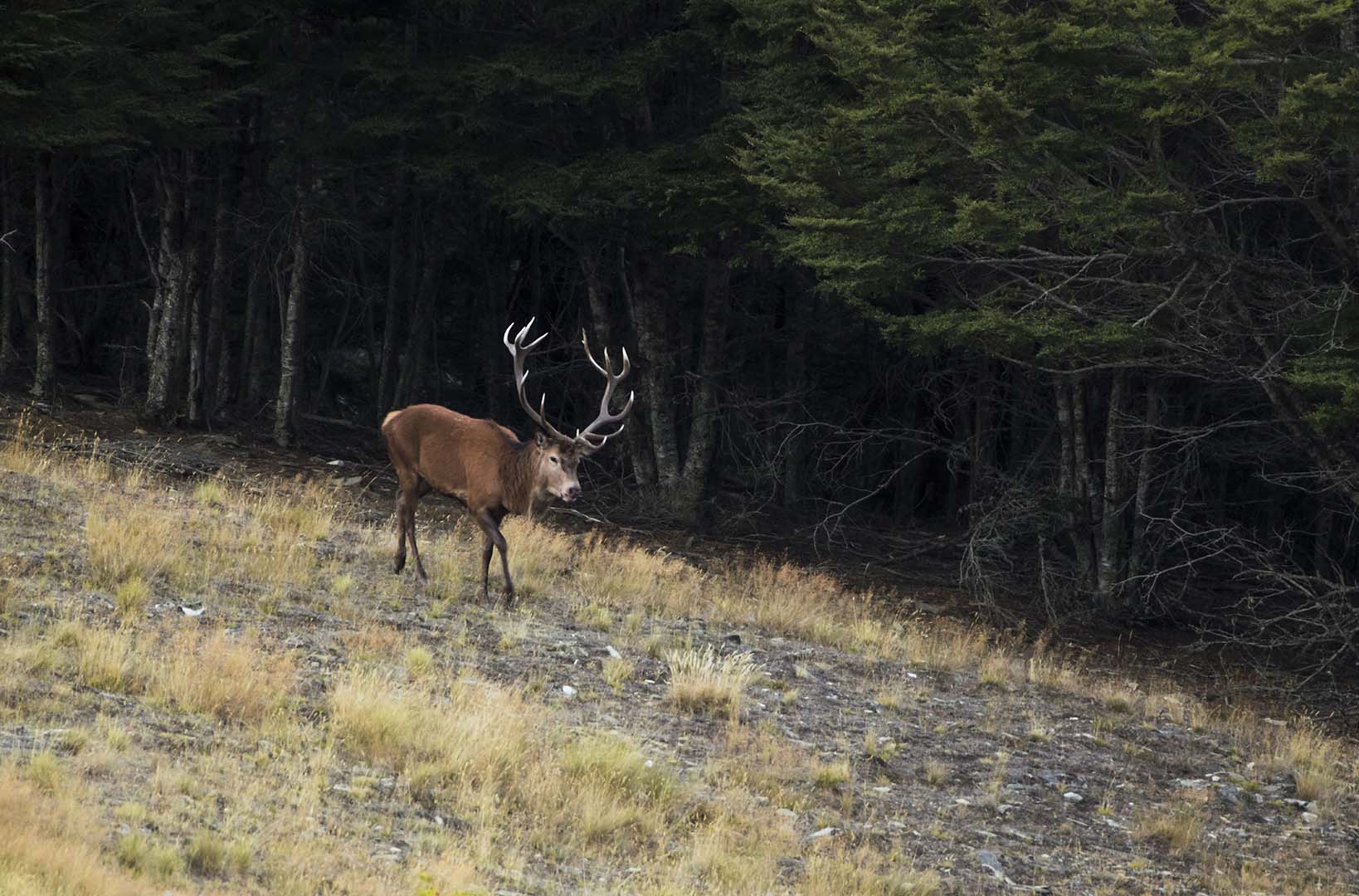
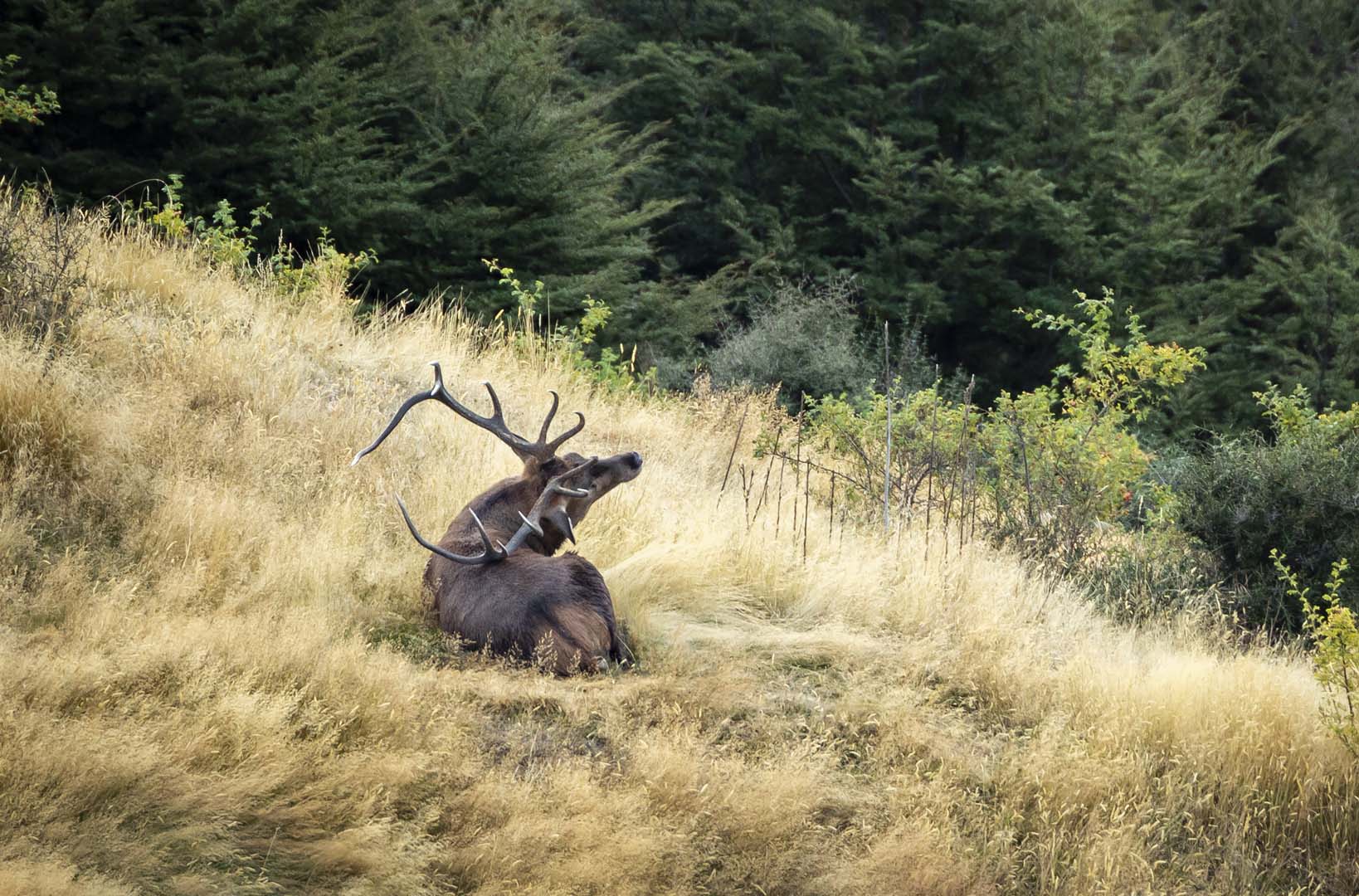
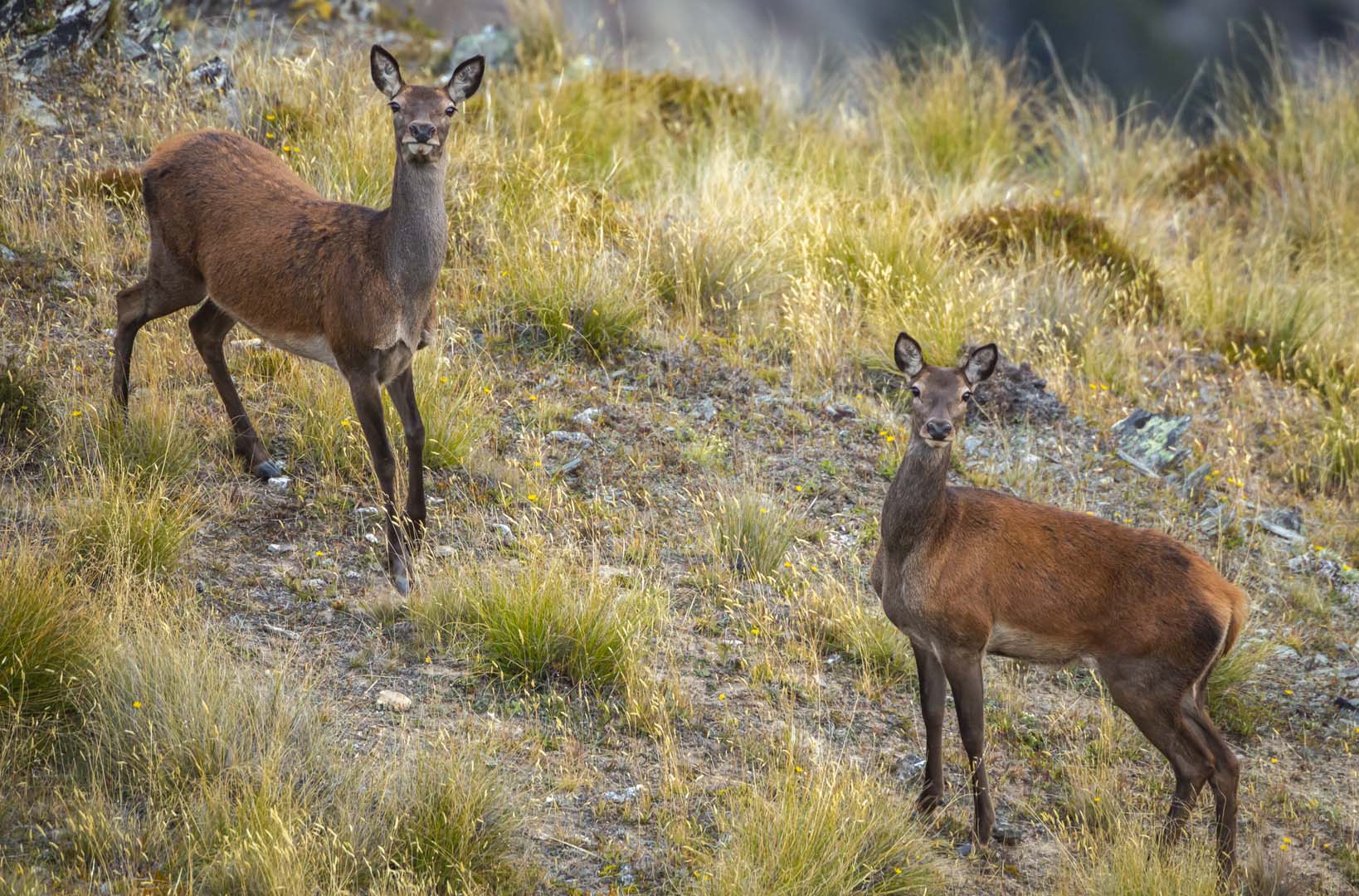
The male of the species is referred to as a Stag, and the female a Hind. The Red deer is the fourth-largest deer species behind Moose, Elk, and Sambar. A Red stag is generally 175 to 250 centimetres long and weighs between 160 to 240 kilograms, while the hind will average 160 to 210 cm long and weigh 120 to 170 Kilograms. The tail adds another 12 to 19 centimetres in both the hind and the stag, however differences in tail length is common amongst the subspecies; specifically, European Red deer have a relatively long tail compared to their Asian and North American relatives. Shoulder height of both sexes is between 95 to 130 centimetres as sexual dimorphism is common, meaning the male of the species is larger than the female, and only the male of the species will carry antlers.
Size varies greatly in different subspecies with the largest physically typically being the Carpathian Mountains stag (C. e. elaphus) weighing up to 500 kilogram and at the other end of the scale, the Corsican Red deer (C. e. corsicanus) weighing between 80 to 100 kilograms, which makes it the smallest.
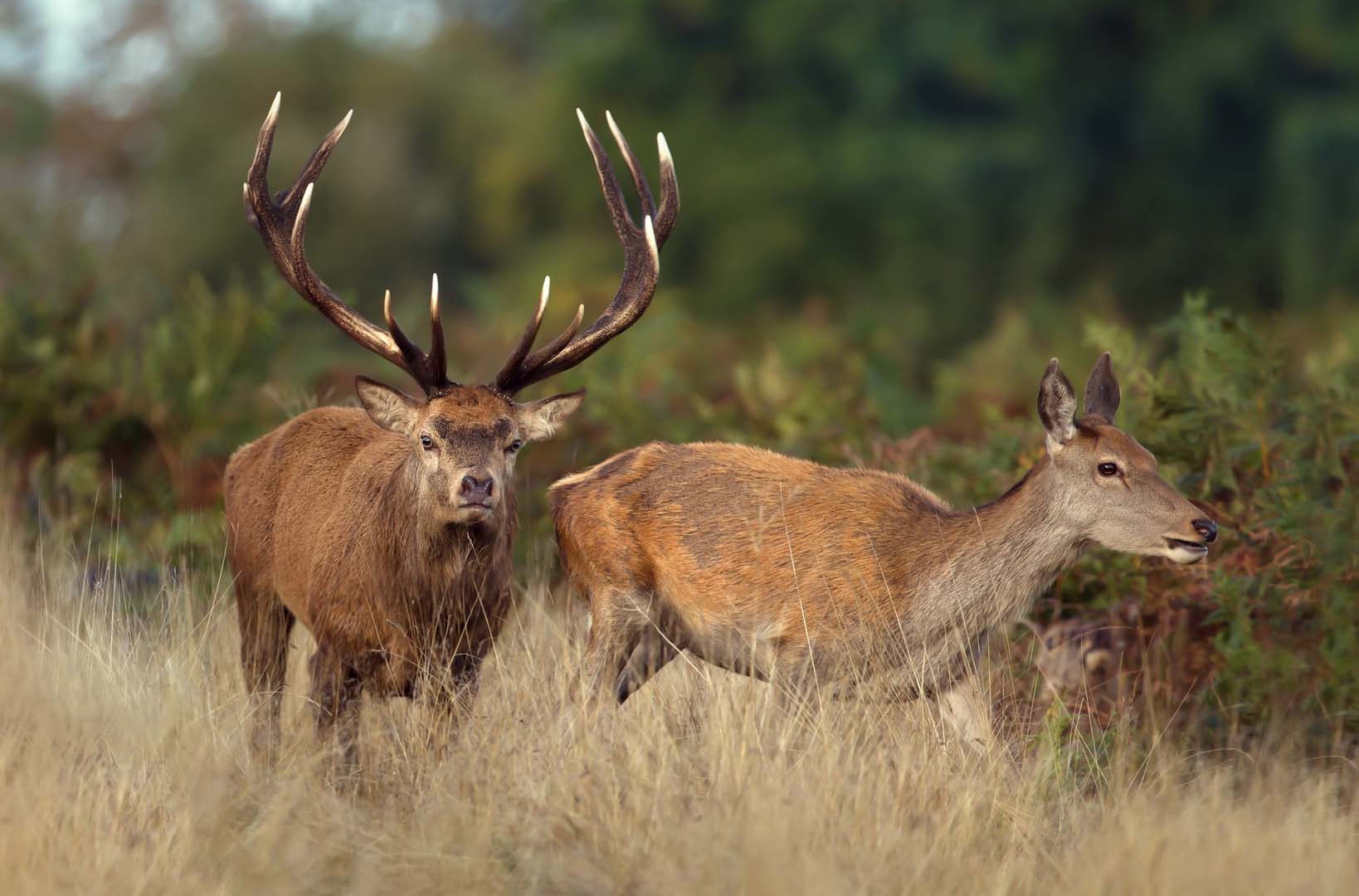
Although adaptable, it is worth noting that Red deer in poor habitats can weigh as little as 53 kilograms. Subtle differences in appearance between the various subspecies of Red deer, primarily in size and antlers are common, the antlers of a stag will typically be proportionate to his body size. Antler configurations can vary greatly, the Red stags antlers have been used as a symbol of strength and vitality for centuries in hundreds of different ways on an international basis, in fact even in countries where he does not exist in as an indigenous form. The main construction of the antler is round, with tines erupting from the main beam which can then branch into multiple tines at the top. European red deer antlers are perhaps the most recognisable antlers of any species of deer. They are distinctive in being rather straight and often will be heavily pearled. The fourth and fifth tines forming a top, commonly referred to a “crown” or “cup”. Any tines in above or around the fourth and fifth tines grow radially from the cup, which are generally absent in the antlers of smaller red deer, such as Corsican Red deer. Western European red deer antlers feature “bez” (second) tines that are either absent or are often smaller than the brow tines.
Antlers of Caspian red deer carry large bez tines and form less-developed tops(crown/cups) than western European Red deer, their antlers are thus more like the “throwback” top tines of the North American elk (C. canadensis). The structure of a Red deer antler, unlike the primitive confirmation of most of the Asian form of the same genus, represent a “clock” in time – a pattern developed over a considerable period and which, if body deterioration due to starvation or similar takes place, degenerate in the very same order in which they have developed over that long duration of evolution. Unlike those related Asian forms, the Euro-Asian Red deer has, in more “modern” times, developed bez tines and a much more complex structure of “tops” perhaps more correctly referred to as sur-royals (Bruce D. Banwell The Red deer, Part 1).
The Red deer herd is matriarchal, being dominated by a single female and, depending on geographic location, will migrate to lower elevations in winter. Hinds will separate from the stags after the rut, as the hind leaves to give birth, while the stags form separate summer herds. Stags are territorial during the rut and will extensively wallow in shallow depressions of mud, rub trees and foliage and roar.
The roar is an interesting display carried out by the stag where competing stags engage in roaring ‘contests’ in situations where fights are likely. Observation combined with playback experiments showed that stags answered each other’s roars and that their roaring rate was related to that of their opponent. Both individual differences and temporal changes in roaring rates were correlated with changes in fighting ability and roaring contests usually occurred only where there was no obvious size discrepancy between opponents (The Roaring of Red Deer and the Evolution of Honest Advertisement. T. H. Clutton-Brock and S. D. Albon).
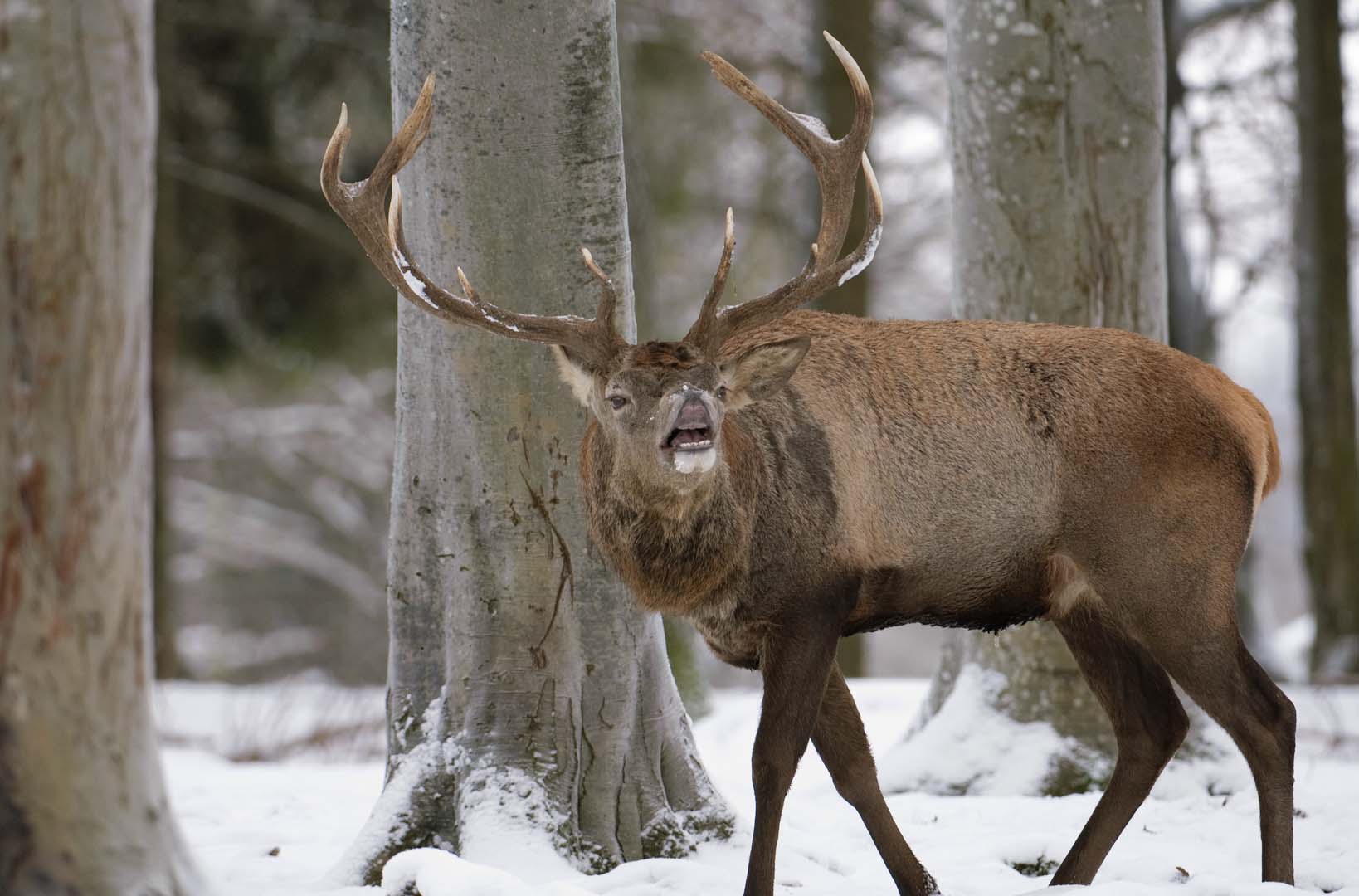
The rut typically takes place in late March to April in the Southern Hemisphere and September into October in the Northern Hemisphere. Red deer are polygynous, meaning one stag will mate with multiple hinds. Post rut, gestation usually lasts between 240 to 262 days when a single offspring is born. Unlike smaller forms of cervidae such as Fallow and White-tailed deer, the offspring of a Red hind is referred to as a calf, rather than fawn (Banwell). Following birth, a hind and a calf live alone for a few weeks. After 16 days a calf may join the herd, with weaning completed within 60 days.
An interesting collaboration between German anatomist Reinhold Hofmann and Kenyan game biologist D.R.M. Stewart published a paper in the journal Mammalia in 1972 in regards to the feeding habits of deer. The scientists argued that all ruminants could be split into groups based on their feeding strategy. Traditionally, ruminants such as deer had been considered either ‘grazers’ or ‘browsers’ according to how they fed. Hofmann and Stewart suggest that there are actually three groups: concentrate feeders (i.e. the browsers); grazers (eat grass and other roughage); and intermediate feeders (which graze and browse). Accordingly, the biologists grouped the ruminants such that about 40% (including moose and Roe deer) were concentrate feeders, 25% (including sheep and cattle) were grazers and the remaining 35% were intermediate feeders, which “choose a mixed diet but avoid fibre as long and as much as possible”. Red deer are included within this group. In a 1989 paper on the subject to the journal Oecologia, Hofmann re-affirmed these groupings and wrote of the Red deer; “When forage plants lignify (‘woody’) these animals switch to ‘browse’ or falling fruit and seeds (‘autumn mast’) and finally reduce their metabolism and food intake as they, like CS [browsers, cannot digest fibrous forage as well as GR (grazers)”.
In a twist on commonality, Cervus elaphus has earned reputation for carnivory and the Red deer holds the record for “Most bloodthirsty ungulate” in the 2007 edition of The Guinness Book of Records.
This noted behaviour occurred on the Isle of Rum, which is a small island on the west coast of Scotland. Red deer research has been conducted on the island since 1953 where this almost title was earned for the Red deer. In 1969, the former chief warden of Rum, Peter Wormell, published a letter in the Deer journal in which he briefly described Red deer biting the heads off Manx shearwater (Puffinus puffinus) chicks. The discovery that deer on Rum sometimes kill and eat seabirds is further supported by the book, A Life for Deer, where veterinarian John Fletcher describes seeing a deer knock-over rabbits infected with myxomatosis and ‘chew them up’, as well as other accounts of deer chewing antlers that were still attached to another stag. Similarly, in the works of Kia: A study of Red deer, Ian Alcock refers to an Australian friend who told him of a Red deer stag that ate a dead sparrow that it found in the enclosure and, a couple of weeks later, the same deer caught and ate a frog from a small pond in the enclosure.
“The adaptable and unique Eurasian red deer is, in the opinion of the writer, together with the stunningly beautiful tiger, amongst the most remarkable animals on the planet and certainly one of the most impressive members of the animal kingdom
Distribution, subspecies” (Bruce D. Banwell The Red deer, Part 1)
Although at one time Red deer were rare in parts of Europe, they have not been close to extinction. Reintroduction and conservation efforts, such as in the United Kingdom and Portugal, have resulted in an increase of populations, while other areas, such as North Africa, have continued to decline.
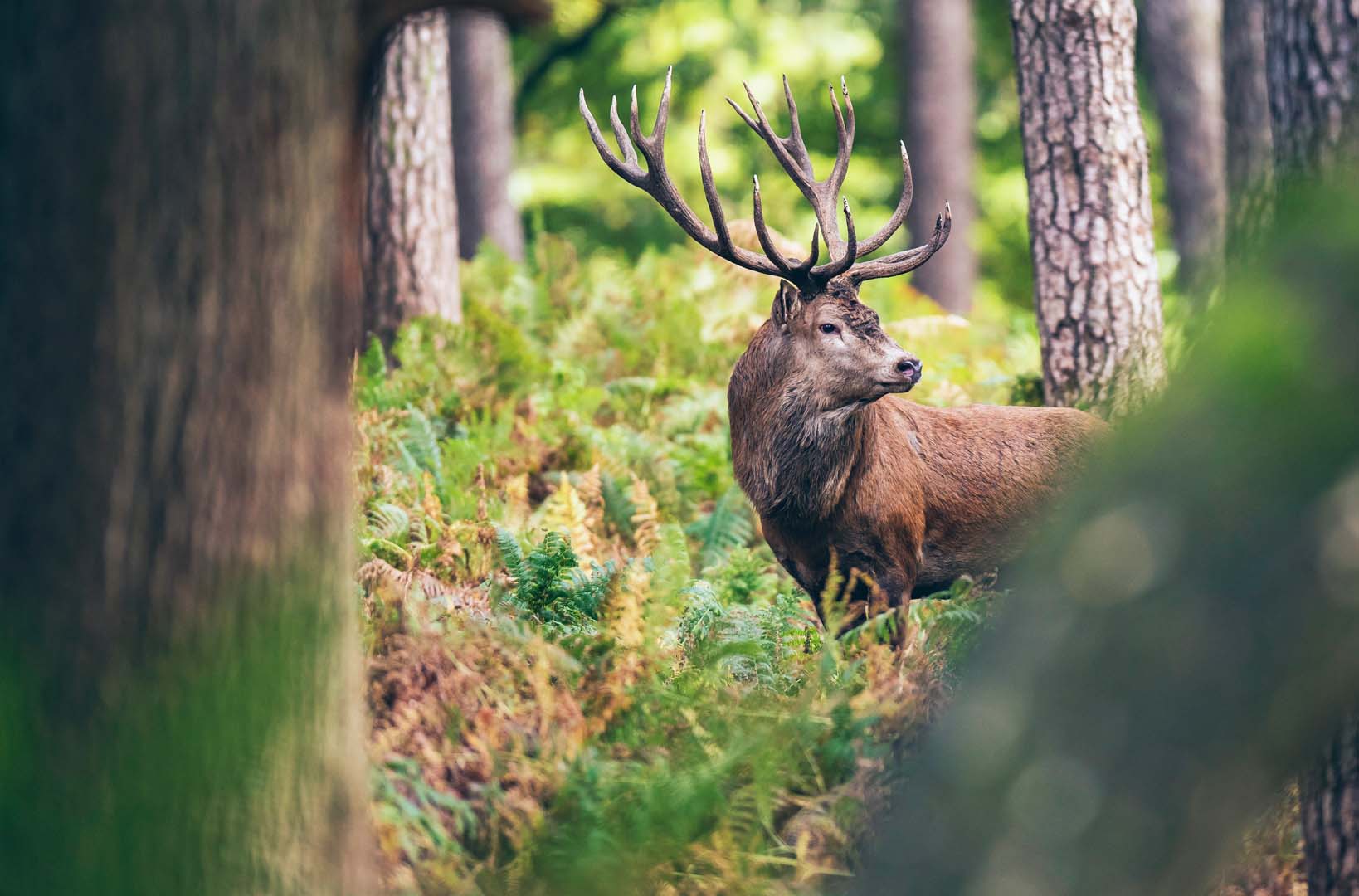
The Red deer sustains a long history of having been prey on the landscape throughout time. Initially, Red deer once graced the land scape alongside predators some 700,000 years ago such as; Sabre-tooth tiger, Cave lions and large bears. In more recent times, they were predated upon by tigers in the Caspin sea area, Leopards in Asian minor as well as lions within the range of the Barbary Red deer; all of which are now extinct. Although the hand of Man is the modern predator of both the species as well as the Red deer’s habitat, the known predators in the modern era of the Red deer include; Black bear, Brown bear, Snow leopard, Eurasian lynx and, where present, wolves.
Red deer inhabit most of Europe, Asia Minor, the Caucasus Mountains region, Iran, areas of western Asia, as well as central Asia. They are also the only species of deer living in Africa, namely, the Atlas Mountains area in north-western Africa between Morocco and Tunisia. Fossil data suggest that Red deer were probably the earliest deer associated with British woodlands, having appeared during Europe’s mid-Pleistocene Cromerian Interglacial period, about 400,000 years ago. It appears that Red deer disappeared from most of Europe during the Younger Dryas cold spell, returning and extending their range to Great Britain during the early postglacial period (Red Deer Interaction with Humans – Websource).
Historically in the deer’s relationship with humans, Red deer were considered a ‘beast of chase’ by the Norman kings who set aside large areas of their kingdoms so they could hunt stags. Deer and other hunt-worthy animals were protected by stringent “forest laws”. As with many deer species, Humans have had a close relationship with them over a significant amount of time. For instance, remains dating back to the Wolstonian Glaciation of Jersey suggest that human hunters were taking Red deer as prey around 150,000 years ago. Earlier evidence also suggests that hunting “big game” took place around 600,000 years ago, as is shown at the site of Zhoukoudian, present day Beijing – China. This reliance on deer is also accompanied with some evidence to suggest that early man may have somewhat farmed deer for their antlers, which were carved into tools and jewellery, examples of tools used by man are those found in a study of the mining of flint by Neolithic peoples at Grimes Grames in Norfolk. The flint pits having been mined for over four centuries using Red deer antler as a tool for digging.
Red deer seem to have survived well following the retreat of the ice at the end of the last (Devensian) Glaciation, when Britain was a largely tree-covered island. However, growing pressures for land led to clearing of woodland for farming and settlement intensified with the arrival of the Romans and it is likely Red deer populations suffered in the face of this habitat loss. The Saxon kings introduced a series of Forest Laws to secure their quarry – these laws dictated, among other things, who could kill game, who could live in the forests and how high fencing could be. Several “Royal Forests” were established in England from this time, with Epping Forest in Essex’s Ongar Great Park thought to be the first, established by King Canute. Up until the Norman Conquest, kings were free to hunt their own lands in England, but the arrival of William the Conqueror saw the practice of deer hunting as a pastime of royalty and aristocracy firmly established, along with several other Royal Forests and deer parks to provide sport and venison for the royal tables. Into the 1500s, deer became more of a fashion accessory to the aristocracy and no grand estate was complete without deer roaming the grounds, particularly herds containing unusually coloured animals; It was not long after this that deer were traded to settled colonies or deposited along trade routes.
In Australia, the origins of the species here, does have some mystery surrounding it mostly due to lack of sufficient surviving records.
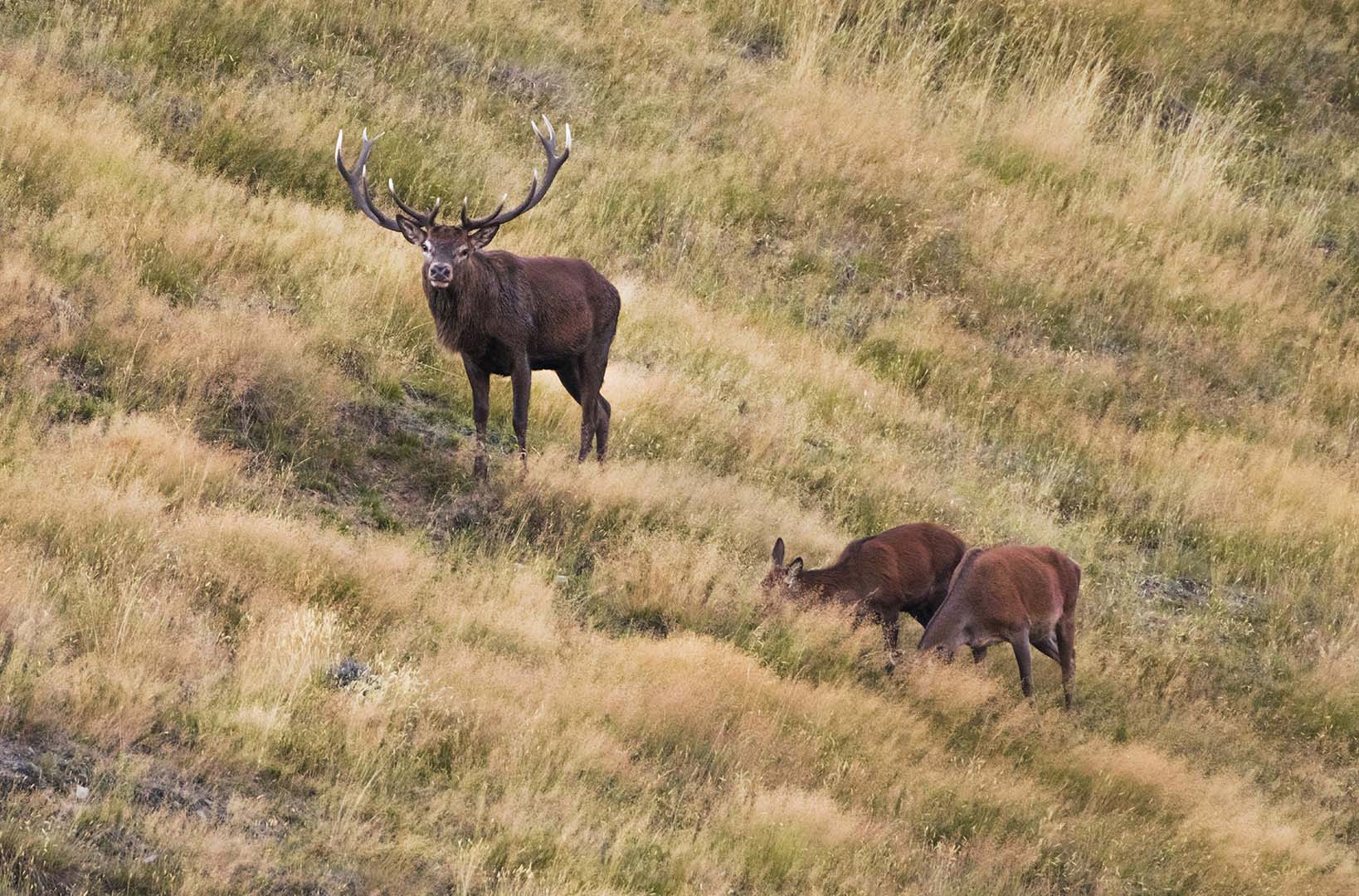
Animals of Scottish heritage are thought to have been held at Thomas Chirnside’s Werribee property although the records of their origin and how they arrived in Australia are not clear other than a mention in the January 26, 1877 edition of The Australasian of deer arriving at Werribee from Dunrobin, Scotland care of the Duke of Sutherland. However, in obscure mention of the Andrew Chirnside had hunted with The Duke of Buccleuch during his stay in England suggests a likely relationship over horses, and such the Red deer which may have resulted in Scottish animals being sent to Victoria and further afield by the Duke.
The primary display of subspecies throughout Australia is the English stock, most notably Windsor Park and Knoesley Park in Lancashire. The later was the original supplier of the nuclease six animals that Thomas Chirnside held at Werribee, shipped to his property in 1860 as a gift from H. R. H Prince Albert (An Introduction to the Deer of Australia, Arthur Bentley).
Often, Australian trophy hunters will refer to “German” forms in descriptors for antler formations, It is worth nothing here that in Windsor Great Park, there was a strong German strain as a shipment of 108 red deer were introduced there care of the Prince of Orange in 1688 although, subsequent farm escapees have contributed to this trait in some areas over the last hundred years.
The first Red deer brought to Australia, likely those held at Thomas Chirnside’s property were amongst several other animals that Thomas took interest in. Thomas bred Herefords and imported bloodstock: one shipment brought him thirty high-class brood mares and stallions. He was an avid judge of horses and a strong sportsman, one of his beliefs being that a man could not be thoroughly healthy unless he rode fast and straight to hounds. He also imported foxes, hares, pheasants and partridges.
In a country in still in its relative infancy, Chudleigh H. Gorrick commenced the public idea that Deer should be introduced to the state of New South Wales for the purposes of Stalking (sic). In an editorial piece titled “DEER-STALKING” from the Morning Herald(Thursday 14, Nov 1912), Chudleigh “who is a leading authority on deer-stalking” states that ”Now that the Commonwealth Government have seen fit to introduce deer to the Northern Territory, why should our State Government remain inactive when it is a fact that there is no more suitable country than that of, say, the country immediately in the neighbourhood of the Yarrangobily Caves”. His spin on the idea coming from the possibility of diverting tourist hunters from New Zealand to New South Wales.
Queensland, as was the fashion of the time took a number of deer as a gift from English Royalty by way of the first Red deer in 1873. Two stags and four hinds presented to the Queensland Acclimation Society by Queen Victoria. These animals transported out to Cressbrook station under the power of bullock in late 1873 and liberated. These animals were from Windsor Park, however, as Arthur Bentley points out; a second liberation in 1874 of animals gifted by Duke of Buccleuch (Or Agile) to the Governor of Queensland, Lord Lamington took place which may explain some Scottish influence into the Queensland herd.
The Red deer introduction to New Zealand has perhaps been one of the greatest, yet saddest success stories to date with having been amongst some of the most adaptive animals released into the New Zealand landscape. Their presence has enabled whole industries to be formed, markets to be supplied, and conversely, a great deal of pain to some, including the Wapiti of Fiordland. The first Red deer to have entered New Zealand is under some conjecture as it was initially believed the first animals to arrive was by way of a gift from Prince Albert in 1854 containing a stag and hind shipped to Nelson from Royal Richmond Park, London. However, in the sensational book by T.E Donne “The Game Animals of New Zealand”, Donne writes that a stag and hind were shipped in late 1850 to New Zealand as a gift by Lord Petre of Thorndon Hall, Essex and subsequently released in the Matitai Valley near Nelson in 1951. Although, he reports that the hind was shot shortly after.
Banwell reports in his Part 1 of his Red deer series, that the Otago Red deer are likely the only surviving gene pool of pure Cervus elaphus scoticus, referring to the deer as being of Scottish heritage whereby the remaining herds are of Windsor park influence or now, mixed heritage. The Cervus elaphus scoticus arriving by way of sixty calves having been captured, care of the Earl of Dalhousie; were hand reared and the surviving seventeen split into two shipments arriving into Dunedin on January 21, 1871 and the second lot following in February of the same year.
Further shipments took place from Australia to New Zealand mainly from Victorian herds over subsequent years to Southland Acclimation society & the Government Tourist Department such as one in 1895. Melbourne hunt club shipping Red deer that that were held at what is now called “Deer Park” to the Otago Acclimation Society, for apparent release in North Otago. (Introduced Mammals of New Zealand, K. A Wodzicki) as well as ongoing shipments from other countries.
Great exploitation has occurred of the use of Red deer by hunter and industry alike, the animals having been crossed with Wapiti for venison in the venison trade to provide larger body sizes for greater meat yield as well as velvet harvest for medicinal market.
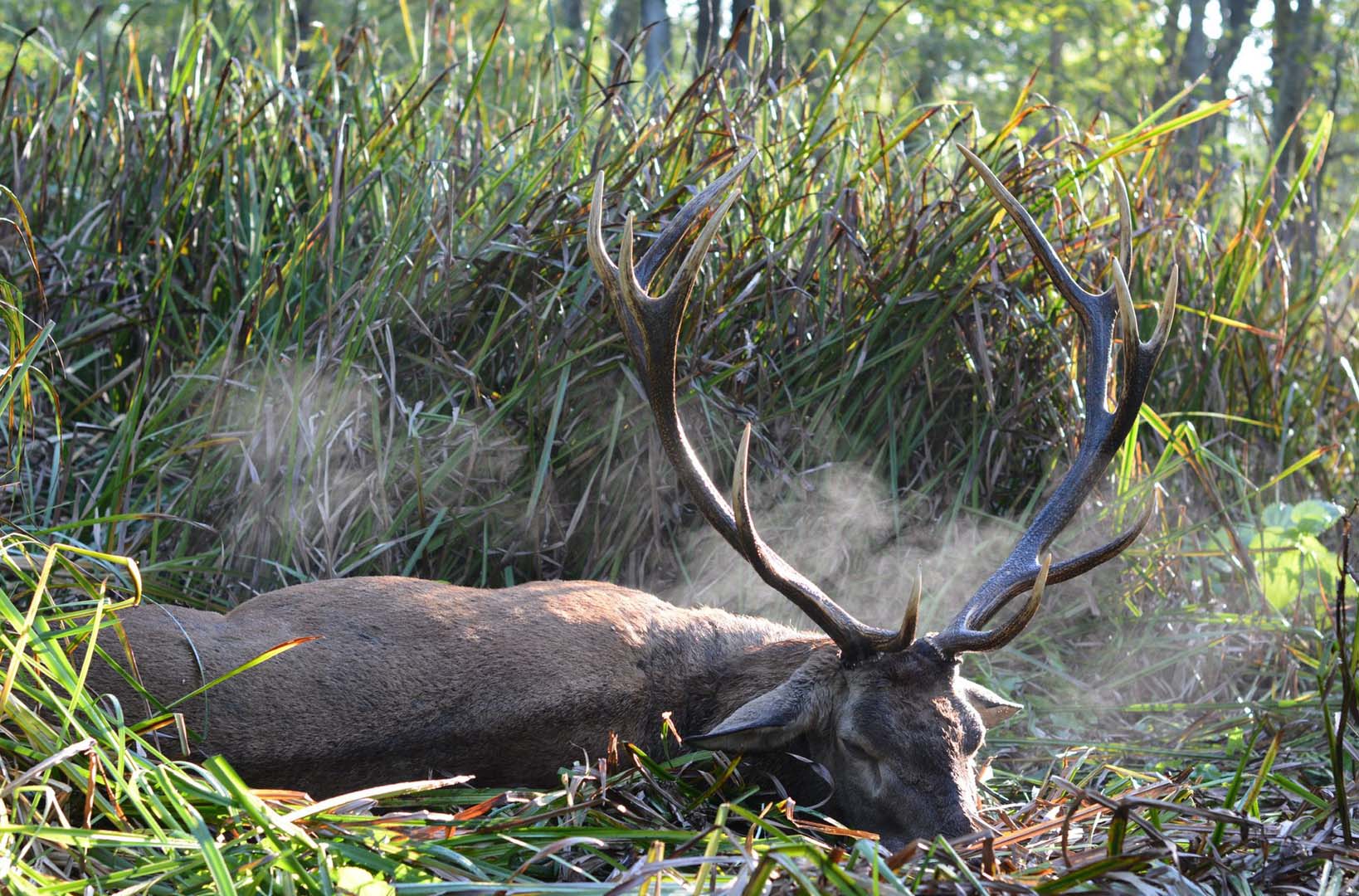
Perhaps the most significant recent event to take place surrounding the Red deer is the 1970 “Deer Wars” and now, the unmitigated poisoning of deer, including Red deer across the New Zealand landscape. Unfortunately, Australian deer are not exempt from this type of treatment by our local Governments as well, where the true value and historical significance of the resource is not recognised nor respected.
The various sub-species of Red deer can be hunted across the world in different settings, for instance the European and Carpathian Red deer can be hunted via several methods such as driven hunts, stand hunts and stalking roaring stags in the mountains. The expected trophy quality of some of these animals will often exceed 450ds and are charged, typically on a skull weight accordingly.
Countries such as Macedonia, Italy, Croatia, Hungary and Serbia offer exceptional traditional opportunities at big Red stags. Similar opportunities exist across the United Kingdom although, it’s suggested that the hunter should confirm in advance the status of the animals enclosure or lack thereof. Wilderness hunts can be had in many exciting locations in the areas of their range across the world typically by stalking or horseback.
Quality trophies being managed and offered by the likes of New Zealand outfitter Chris McCarthy at Lake Hawea Hunting Safari’s make true traditional free range trophy Red stags, with expected trophies of 300+ds being pursued hold an abundance of history behind them, accessible to the Australian and New Zealand hunter as well as an exciting adventure for those traveling to New Zealand from further abroad.